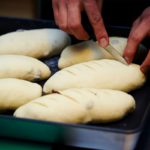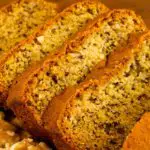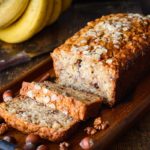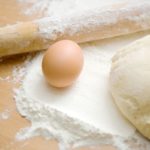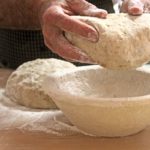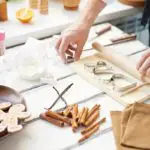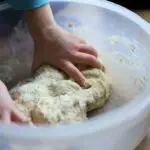Scoring bread dough is a time-honored practice that has both practical and aesthetic appeal for all bread fanatics, from the budding bakers to the seasoned professionals.
Scoring involves making incisions in the surface of the dough with a sharp blade, a razor blade, kitchen scissors, or bread lame in order to allow more room for expansion as the dough rises.
It’s not always strictly necessary, but many bakers believe scoring bread looks appealing, so they’ll do it anyway.
But regardless of why you’re scoring bread, you need to know when to do it. Otherwise, you could run into some pretty irritating issues when you open the oven door.
When Should You Score Bread?
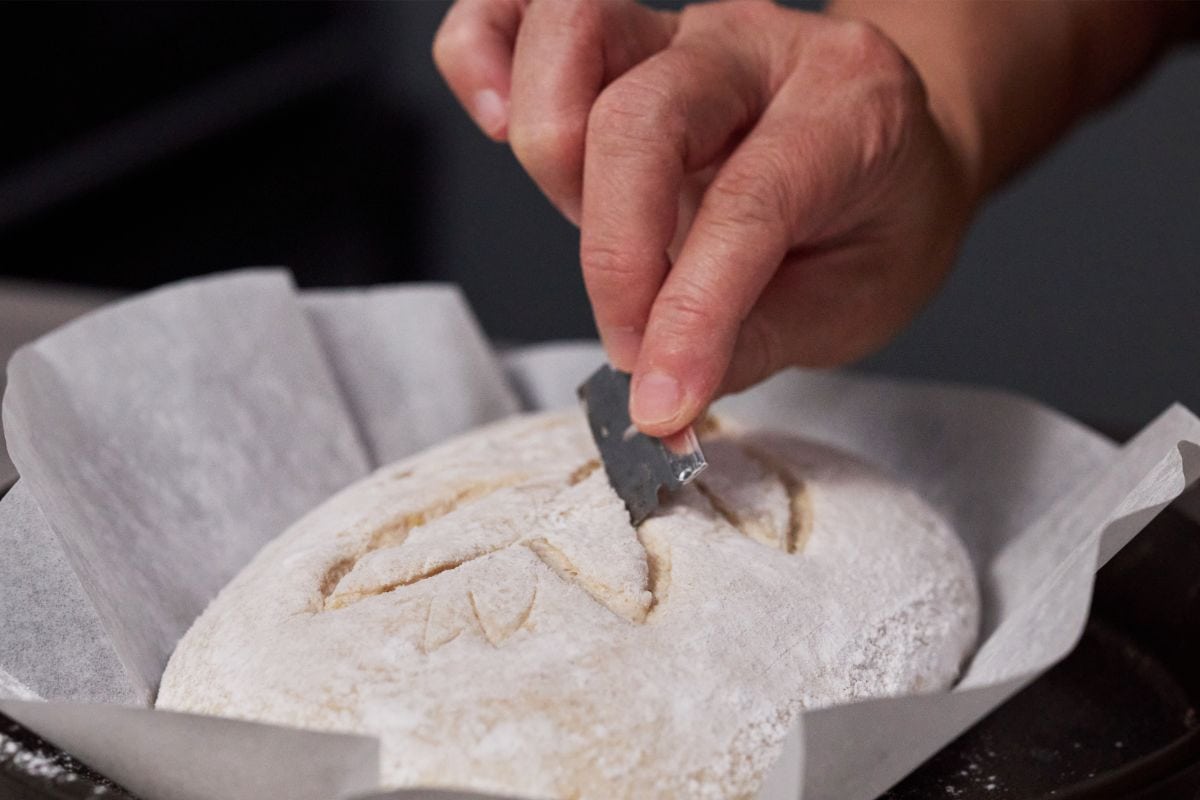
In all cases, if you’re opting to score dough, it should be done after the final proof, the moment before you place your bread dough in the oven. This is so the scores are stable as the baking process begins.
Score bread before the final proving, and it will mess with the pre-baked rise triggered by fermentation, leading to an oddly shaped dough, and ultimately, an oddly shaped loaf.
What’s more, a fully proven dough has more internal air pockets, meaning the surface of the dough is thinner, making it much easier to get a clean cut.
Do All Breads Need Scoring?
As mentioned earlier, scoring bread isn’t always a must. It all depends on the type of bread you’re making.
The general rule of thumb is that incredibly moist bread or bread that bakes at a very low temperature will not need to be scored.
However, if you want your bread to have that classic look, you may choose to score it anyway. Again, this should be done after the final rise, before your dough goes into the oven.
As they’re often cooked at low temperatures, soft shell bread typically doesn’t require scoring, but for crusty breads, it’s a no-brainer.
Sourdough bread is a classic example of a scored bread, while other loaves simply won’t need it – Focaccia is typically unscored due to its incredibly high hydration.
What About Breads That Are Neither Here Nor There?
Sometimes breads fall sort of in between the two extremes given above.
Rye breads, for instance, don’t experience the same oven spring as crusty or low hydration white breads, but scoring can still help to create better-looking loaves.
If you’re ever unsure which bread dough needs scoring and which doesn’t, recipes should tell you.
Why Should You Score Bread Dough?
When a baker places bread dough in the oven, the heat triggers something known as the oven spring, which can be problematic if not anticipated.
What Is An Oven Spring?
An oven spring is a period of rapid expansion during which pressure builds beneath the surface of the dough and steam tries to force its way out of the bread.
This steam automatically pushes against paths of least resistance, leading to unsightly bulges and blowouts when these weak spots give out.
Now, if you strategically score the bread dough surface, you direct this pressure towards an exit in a controlled manner that doesn’t deform the bread.
Note, scoring bread doesn’t change the way it tastes in any way; it’s just a means for bakers to create a beautiful loaf.
Scoring Bread Dough For Decorative Purposes
You can also score bread as a decorative touch. For instance, have you ever seen sourdough bread with a wheat stalk design?
Well, the wheat stalk effect is made by diagonal slashes along either side of a larger central score.
This is one of many, many examples of scoring patterns that exist purely as decorative design.
If you’d like to give something like this a go, we’d recommend keeping it nice and simple. An intricate pattern will most likely get lost or tear during the oven spring.
But if we can’t talk you out of shooting for a more complex pattern, be sure to use smaller cuts for enhanced definition.
What Should You Use To Score Bread?
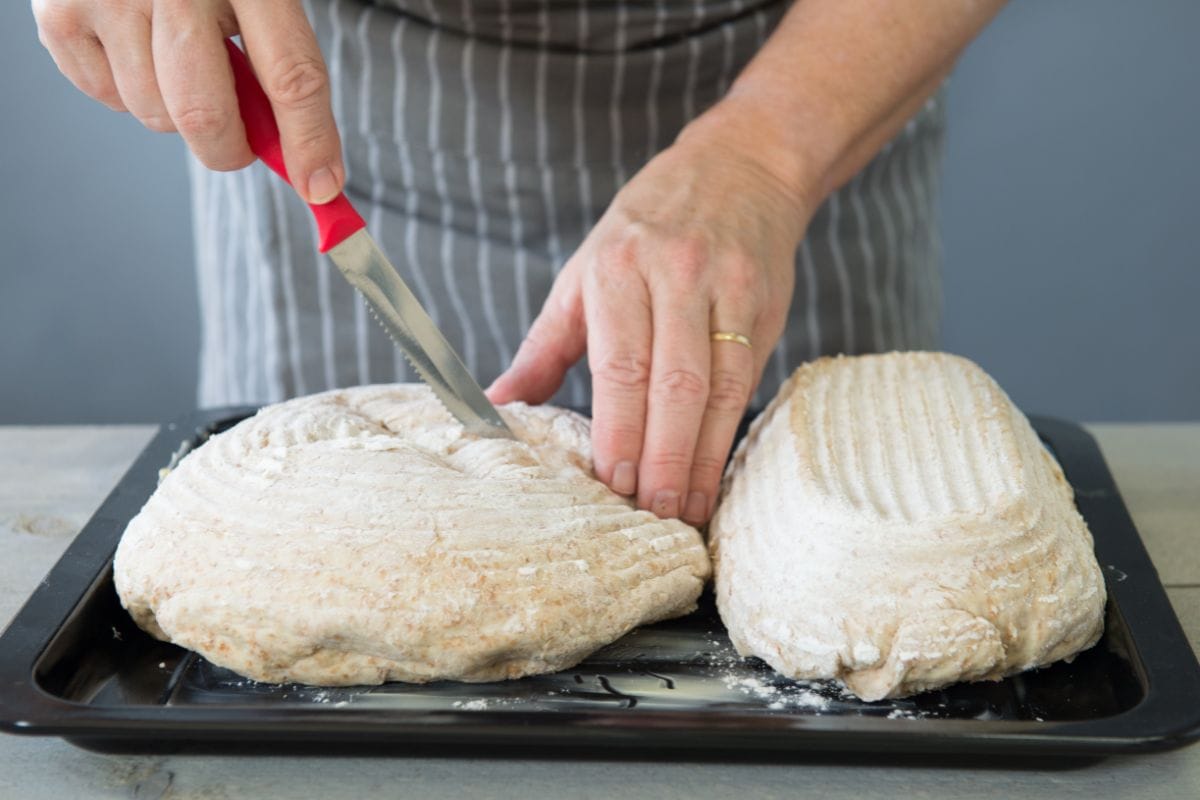
When scoring bread, there are a few options in the way of tools. A very sharp knife will do in a pinch, as will a serrated knife if it’s long enough, and don’t neglect a curved blade if you’re after a more dramatic “ear”.
A loose, sharp razor blade can work too as long as you’re careful, but if you want to mimic the professional bakers, there’s really no substitute for a bread lame.
A bread lame is a scoring tool typically comprising a long stick and a razor blade. The sharp blade fits into the end of the stick, freeing the rest of the stick up as a comfortable handle.
If you love baking bread, we feel that a lame is an absolute must!
Tips For Better Scoring
- Over proofing and scoring are a match made in hell! If you score the dough of an over proofed project, the slits will let all the air out, and your dough will deflate, balloon style – Boo!
- As mentioned earlier, always wait until after the final proof to score the bread dough surface. The dough needs enough rise time to reach full raw expansion.
- Cold dough makes for a taut surface, which, in turn, makes scoring bread neatly much easier as there’s very little drag as the blade passes through.
- Wet dough should not be scored as it’s impossible to prevent universal expansion. Plus, with no resistance, even a sharp knife will fail to make a clean incision.
- Dust your dough loaf with some excess flour before scoring to create contrast between the outer core and the soon-to-be-revealed core.
- Quickly score the dough. A slow cut is a messy cut!
- A shallow cut will lead to a thinner opening – perfect for decoration.
- When scoring with a straight blade, hold it at a 90 degree angle to the dough.
- When scoring baguettes, slash at a 45 degree angle along the axis of the bread dough.
- Bakers using kitchen scissors instead of a blade, make sure the edge is nice and sharp.
- Scoring bread dough should be done with the arm rather than the wrist.
- Spritzing a sharp knife with cooking spray will give you an even cleaner cut.
- An oval loaf provides ample surface for decoration should you wish to give it a go.
- For an attractive ear, score sourdough at a 45 degree angle.
- For a longer loaf with a central score, slash at a 90 degree angle.
- Soft dough can be problematic when it comes to bread scoring, so be sure to check the consistency of the dough before the final proof.
- Score your bread right there in the proofing basket to limit handling of the loaf.
Final Thoughts
Lots of recipes inform you that you should score your bread, but not all of them explain exactly when it should be done.
But, now you know that scoring bread dough should take place after the final rise, just before it goes in the oven, so you can score with confidence – Happy baking!

